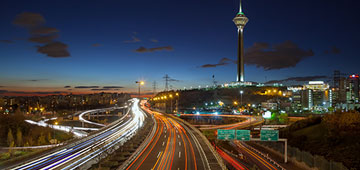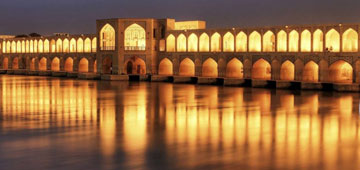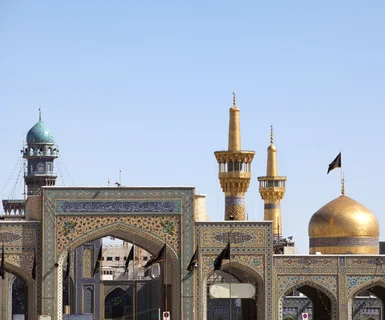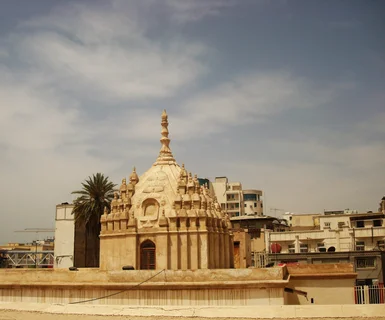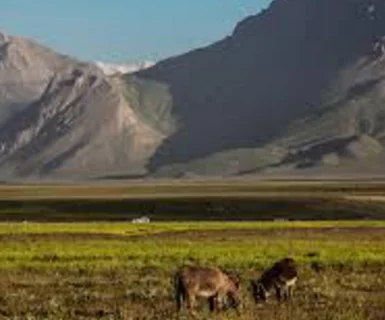Ein vollständiger Leitfaden für Inlandsflüge im Iran
Schritte zur Buchung eines Fluges
Geben Sie den Abflug- und Ankunftsort, das Datum des Fluges und die Anzahl der Passagiere ein. Klicken Sie auf die Schaltfläche Suchen, um eine Liste der verfügbaren Flüge zu erhalten. Schauen Sie sich die Liste an und wählen Sie anhand der angegebenen Fluginformationen die optimale aus. Zu den Fluginformationen gehören Datum und Uhrzeit, Name der Fluggesellschaft, verfügbare Plätze, Flugkategorie und Preis. Nachdem Sie den Flug ausgewählt haben, geben Sie die erforderlichen Informationen ein und bezahlen Sie online. Sie erhalten dann eine elektronische Quittung für Ihren Flug. Geben Sie den elektronischen Beleg und einen gültigen Personalausweis bei der Ankunft am Flughafen ab. Sie müssen Ihre Quittung nicht ausdrucken.
Warum im Iran fliegen?
Reisen in einem riesigen Land wie dem Iran können bis zu 20 Stunden an Land dauern. Aus diesem Grund wäre ein Flug Ihre erste Wahl, wenn Sie eine Reise zu weit entfernten Zielen planen und Zeit sparen möchten.
Wie kommt man zu den Flughäfen?
Die meisten iranischen Flughäfen liegen in den Vororten der Städte und sind daher weniger gut erreichbar als Busbahnhöfe oder Bahnhöfe. Es gibt jedoch einige Flughäfen (z.B. Mehr Abad), die direkt an das öffentliche Verkehrsnetz angeschlossen sind. In der Regel benötigen Sie ein Taxi, um ins Stadtzentrum oder in Ihr Hotel zu gelangen. Im Bodentransportbereich des Flughafens befindet sich in der Regel ein Taxistand, an dem Sie ein Taxi nehmen können. Es gibt in der Regel zwei Möglichkeiten für Sie: Prepaid-Pauschaltaxis zu bekommen, oder mit ankommenden Taxis, die Passagiere am Flughafen absetzen, einen Tarif auszuhandeln. Für die erste Wahl stoppen Sie am Taxistand in der Ankunftshalle und bezahlen den Fahrpreis. Sie erhalten dann ein Ticket, das Sie Ihrem Taxifahrer geben können, bevor Sie einsteigen. Man sollte im Iran immer mehrere Taxifahrer fragen, um den besten Preis zu bekommen. Zusätzlich zu diesen Taxis können Sie inländische Online-Taxianbieter wie 'Snapp', 'Tap30', etc. nutzen. (die wie Uber funktionieren); die Leistungen sind in der Regel sehr günstig (meist weniger als 9 Euro auch für sehr lange Fahrten) und Sie können Ihr Ziel auf der Karte wählen, ohne sich mit den Problemen der Anreise auseinandersetzen zu müssen. Vergessen Sie nicht, vor der Fahrt Bargeld in Rials zu haben, da die meisten Fahrer weder Euro noch Dollar akzeptieren. (Lesen Sie unseren vollständigen Iran-Transportführer)
Checkliste vor dem Flug
- Stellen Sie sicher, dass Sie alle Ihre Reisedokumente an einem sicheren Ort aufbewahren (Reisepass, Buchungsbeleg, zusätzliche Kopien Ihrer Dokumente sowie eine Liste der Notrufnummern)
- Planen Sie, mindestens eine Stunde vor Inlandsflügen und drei Stunden vor internationalen Flügen pünktlich am Flughafen anzukommen; besonders in Spitzenzeiten sollten Sie mit überfüllten Straßen und langen Schlangen an den Flughäfen rechnen.
- Große Flughäfen wie Mehr-Abad haben mehr als ein Terminal. Erkundigen Sie sich bei Ihrer Fluggesellschaft, zu welchem Terminal Sie sich begeben müssen.
- Stellen Sie sicher, dass Sie nicht mit verbotenen Gegenständen reisen.
- Überprüfen Sie die Gewichtsgrenze für Ihr Gepäck; verschiedene Fluggesellschaften haben verschiedene Richtlinien.
Einrichtungen an den Flughäfen
Auf fast allen iranischen Flughäfen findet man:
- Geldautomaten: Aber nicht vergessen! Automaten geben nur Rials aus.
- Banken: Zwar gibt es an den Flughäfen Bankfilialen, aber sie bieten in der Regel keine Wechselstuben an. Haben Sie genug Geld dabei, um Ärger zu vermeiden.
- Duty Free Shops, Souvenirläden und Cafés: Sie können Souvenirs, Geschenke, Snacks oder Getränke kaufen. Denken Sie daran, dass diese Geschäfte in der Regel teurer sind als die Geschäfte in der Stadt.
- Informationsschalter
- WLAN: Erwarten Sie nicht, dass Sie kostenloses WLAN problemlos finden. Einige große Flughäfen bieten kostenloses WLAN an, aber normalerweise benötigen Sie eine SIM-Karte oder eine Internetverbindung (ja!), um Ihr Passwort per SMS zu erhalten. Sie benötigen auch ein wenig Farsi, um die Anleitung zu lesen.
- Mobile Ladestationen: Wenn Ihnen der Strom ausgeht, können Sie Ihre Geräte an den in den Abflug- und Ankunftsbereichen verfügbaren Stationen aufladen.
- Gebetsräume
- Schlafbereiche: Auf den Flughäfen gibt es keine Schlafzone und Sie müssen auf den Sitzen schlafen. Daher ist es empfehlenswert, eine Decke, einen Schlafsack oder eine Liege zu haben, wenn Sie eine Nacht auf einem iranischen Flughafen verbringen möchten.

